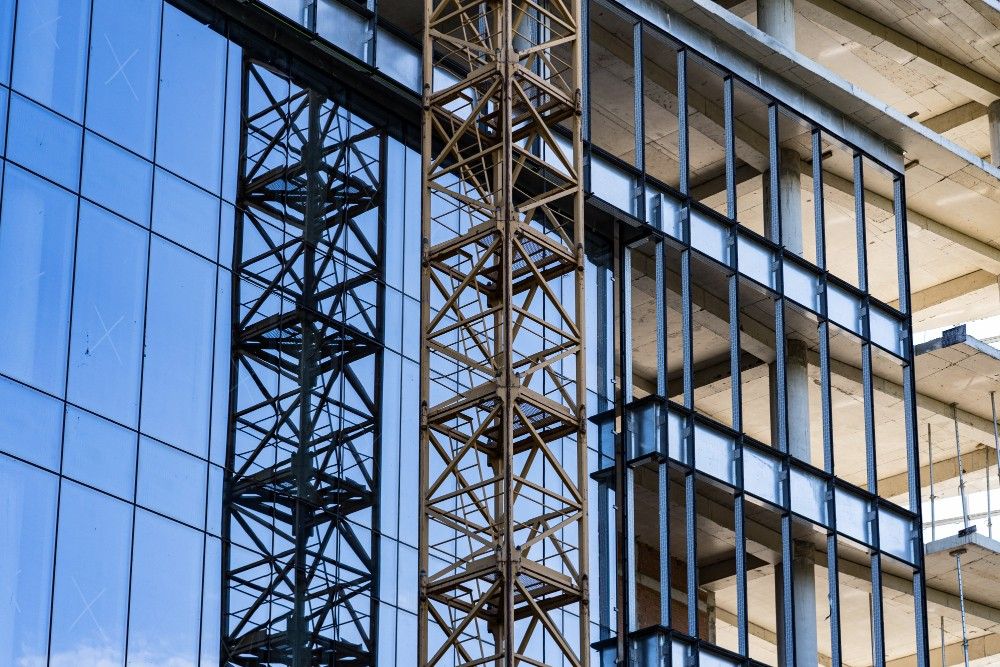
How Advanced Prefabrication Techniques Are Revolutionizing Time and Cost in Industrial Construction?
Industrial construction projects often face significant challenges related to time, cost, and quality control.
With increasingly tight deadlines, rising material costs, and the growing demand for efficient project execution, the industry is turning to advanced prefabrication techniques to address these concerns. These techniques allow for the off-site construction of components, which are then transported to the site for final assembly.
This article explains how advanced prefabrication is reshaping industrial construction by reducing construction time, cutting costs, and improving efficiency.
What Is Prefabrication in Industrial Construction?
Prefabrication refers to the practice of assembling components of a structure in a controlled off-site environment before transporting them to the construction site for final assembly. This can include structural elements like walls, floors, roof panels, and modular units.
The primary benefit of this approach is that it allows for simultaneous work to be done on-site and off-site, effectively shortening the construction timeline.
Advanced prefabrication techniques use modern machinery, robotics, and automated processes to create precise components with less human labor, higher consistency, and fewer errors. These techniques are particularly beneficial in industrial construction, where precision, speed, and cost-efficiency are paramount.
How Does Prefabrication Reduce Construction Time?
1. Off-Site Construction Reduces On-Site Time
Traditional construction involves creating everything from scratch on-site, which is a time-consuming process. Prefabrication, however, shifts a significant portion of the work to off-site factories, where controlled conditions allow for faster production.
Key components, such as structural steel, concrete panels, and mechanical systems, can be preassembled in parallel with site preparation, such as foundation work. Once the foundation is ready, the prefabricated components can be rapidly assembled, cutting down the overall construction timeline.
Studies have shown that prefabrication can reduce construction time by 30-50%, depending on the project’s complexity.
2. Minimized Weather Delays
Construction projects are often delayed due to unfavorable weather conditions. Rain, snow, or extreme temperatures can halt work on-site, extending project timelines.
Since much of the prefabrication work happens indoors, these weather delays are significantly reduced, leading to more predictable timelines and faster completion.
How Does Prefabrication Reduce Costs?
1. Lower Labor Costs
One of the biggest cost-saving benefits of prefabrication is the reduction in labor costs. Traditional on-site construction requires a large workforce to handle different tasks such as welding, carpentry, and masonry.
Prefabrication, on the other hand, consolidates much of this work to a factory setting, where skilled workers can perform tasks in a more controlled, efficient manner.
Furthermore, advanced prefabrication techniques use automated processes and machines that can operate continuously, reducing the need for a large workforce and minimizing the risk of costly human errors.
2. Reduced Material Waste
In traditional construction, materials are often cut and modified on-site, leading to a significant amount of waste. Prefabrication allows for precise measurements and accurate cuts in a factory setting, reducing material wastage. The controlled environment in prefabrication factories ensures that materials are used efficiently, which helps keep costs down.
Additionally, bulk purchasing of materials for prefabrication allows construction companies to negotiate better prices, further lowering overall material costs.
3. Faster Project Completion Reduces Financing Costs
Each day a construction project is delayed costs money-whether that’s in labor, material, or financing the project. By reducing construction time through prefabrication, companies can avoid the additional financing costs associated with extended project timelines.
The faster the project is completed, the earlier it starts generating revenue or becomes operational. This reduction in project time can significantly improve a company’s return on investment (ROI).
Benefits of Advanced Prefabrication Beyond Cost and Time
1. Higher Quality Control
One of the key advantages of prefabrication is the ability to work in a controlled environment. In traditional construction, weather, dirt, and human error can affect the quality of work on-site.
However, in a factory setting, prefabricated components are built to exact specifications using advanced machinery, leading to higher consistency and quality.
Quality control is more streamlined in the factory, as each component can be inspected and tested before it leaves the facility. This leads to fewer defects, less rework, and improved overall quality in the final building.
2. Improved Safety
Construction sites are known for being hazardous, with workers exposed to dangerous machinery and working at height. Prefabrication moves much of the work off-site, reducing the risks associated with on-site construction. Workers in prefabrication factories work in a safer, more controlled environment with fewer hazards.
Additionally, less on-site construction work means fewer workers on-site, which reduces the likelihood of accidents and injuries.
3. Sustainability
As the construction industry becomes more focused on sustainability, prefabrication techniques provide significant environmental benefits. The use of automated machinery and controlled processes reduces waste, leading to less material being discarded during production.
Additionally, components that are fabricated off-site are often assembled with more energy-efficient methods, reducing the overall carbon footprint of the project.
Embrace the Future of Industrial Construction with Prefabrication
Prefabrication will continue to play a crucial role in the development of industrial infrastructure as the need for faster, sustainable, and cost-effective construction continues to grow.
For businesses looking to adopt advanced prefabrication techniques in their construction projects, VMS Consultants can provide engineering, architecture, and project management services.
Reach out to us today to start building for the future.





